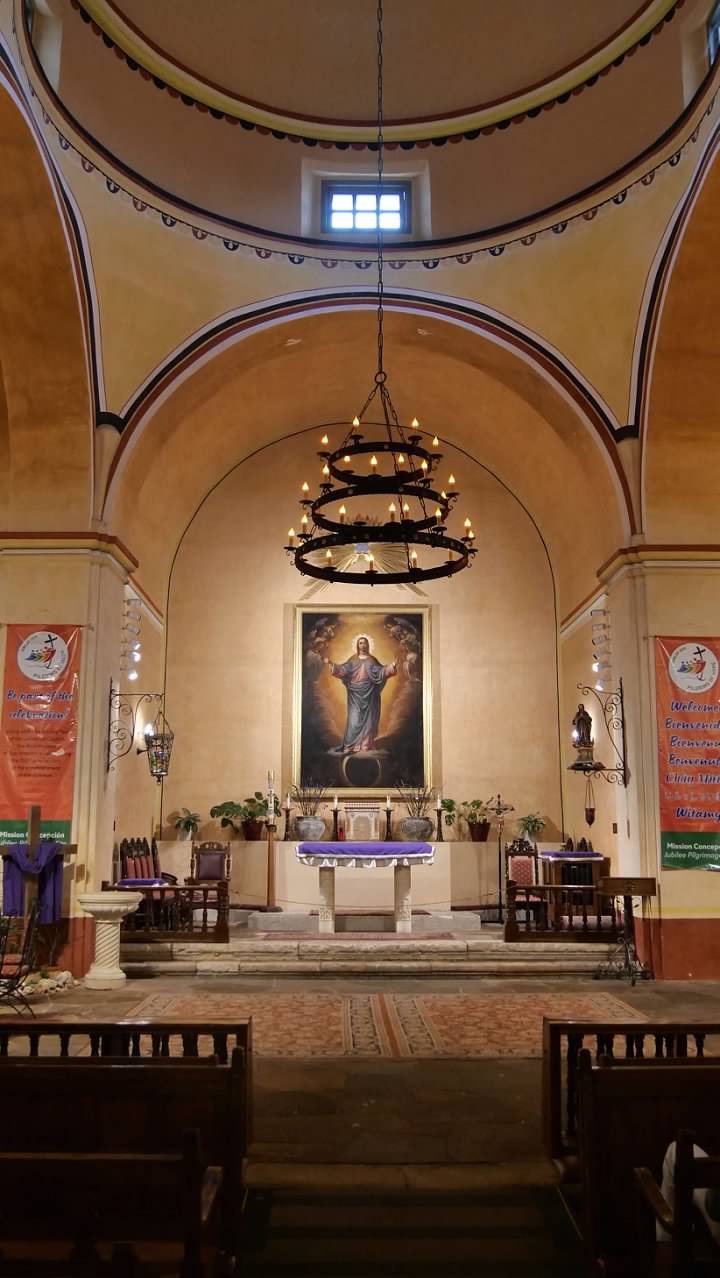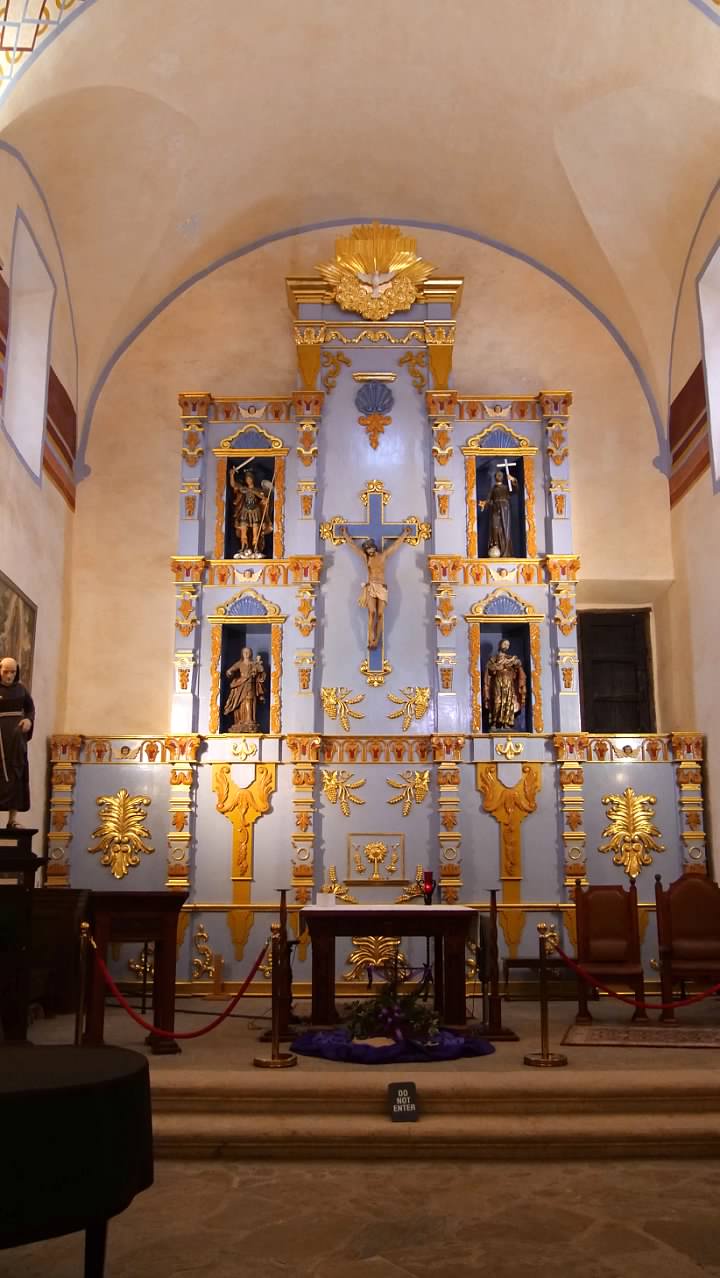
Of the five missions that are designated as the UNESCO World Heritage site in San Antonio, only the Alamo is not part of the San Antonio Missions National Historical Park (which has to be among the longest names in the NPS). The other four missions are (in the order we visited them): Mission Concepción, Mission San José, Mission San Juan, and Mission Espada. Each of these missions was founded in the early 18th century, and all were relocated to their current locations in the 1730s. And the churches at each of these missions continue to serve as active Catholic parishes.
We started at Mission Concepción, which is considered to be one of the oldest unrestored stone churches in the US. We managed to catch most of a tour provided by an NPS volunteer, who had a clear and deep connection to this site. In addition to talking about the history of the site, he pointed out how the architecture was aligned so that the beams of sunlight coming through the windows illuminated specific locations in the church on specific Catholic feast days. He also talked at length about the frescos that decorated the mission, both inside and out. He was a font of information, and had his own theories about the meanings of the frescos and the images included in them. He expressed a wish for enough funding to clean and preserve more of the frescos, which might make further research into them easier and might shed more light into what roll they might have played at the mission.


Our next stop was Mission San José, the largest of the missions, and referred to as the "Queen of Missions". The NPS Visitor's Center is located here, and we watched the film presentation about the missions and their role and purpose. These missions were created by the Spanish Crown with the goal of teaching the indigenous populations how to become productive Spanish subjects. But the missionaries were motivated by a desire to convert the natives to Catholicism. The natives who moved into the mission compounds were expected to adopt European manners and learn skills that would allow them to live in a European-style economy. My wife's friend, who visited the missions with us, was deeply moved by the video, which helped her better understand her roots and heritage. We then walked around the grounds, which were the most complete of any of the missions we visited, providing us with a much better idea of what these missions might have looked like almost three hundred years ago.


When we reached our third stop, Mission San Juan, we found a far less complete compound. The full church here was never completed, and the current church was originally built to be temporary (Unfortunately, I somehow didn't manage to take any photos of the exterior of this church). Even though the mission was largely in ruins, aside from the church, we were becoming familiar with how the missions functioned and what the ruins represented. We also were able to explore a little of the preserved farm land, with the acequias (irrigation ditches) that survive from the mission era, showing the level of agricultural activity the missions developed.

By the time we reached Mission Espada, our final stop, we felt like we had learned as much as we were likely to that day. But Espada was easily the prettiest of the missions, at least to my eye. The other interesting part of our explorations at Espada was the ruins of the mission school, which continued to operate as a parochial school into the 1960s. Except for the signs describing this history, I would have been hard pressed to identify these ruins as being that recent. It surprised me to see how little was left of buildings abandoned only 50-60 years ago.
Along the way, we also learned that these four missions, along with the San Fernando Cathedral in San Antonio make up the
El Camino de San Antonio Missions, a pilgrimage route for faithful Catholics. Those who complete the pilgrimage route can receive a certificate of completion, and those who walk the route can receive a 30km credit towards completion of the El Camino de Santiago de Compostela in Spain. Inside each church was a stamp that pilgrims can use to document their visit to that location.
We visited the missions because they were a designated UNESCO World Heritage site, without much in the way of expectations for what we would find. Our visit here was enlightening, showing how the Spanish colonial period changed the native culture and the landscapes of this part of North America. It illustrated how the modern culture of the indigenous peoples is a mixture of influences from their native traditions and the Spanish practices that were instilled by the missions. It was also a stark reminder that the history here is far older than many people realize, that the Spanish were here long before this land was part of the Texas Republic or the US.
![[personal profile]](https://www.dreamwidth.org/img/silk/identity/user.png) expedition_retirement) wrote2025-04-17 02:13 pm
expedition_retirement) wrote2025-04-17 02:13 pm